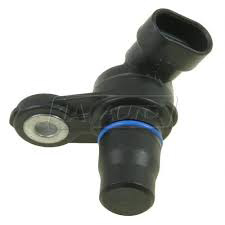The importance of system knowledge for a good diagnostic process is now one of the primary factors for an accurate diagnosis of modern systems.Time taken to understand how every components in the system behaves in operation is a key  factor.
factor.
Recently we have had several cases in point, where basic system knowledge would have saved a great deal of diagnostic time.
Case 1 - 2012 VW Polo 1.2 TDi
Hard codes for Boost Pressure /MAP sensor were present. The tech replaced the MAP sensor without testing for correct operation of the old component. The fault would not clear. Not being familiar with the sensor signal he should be getting, he called the helpline for assistance with locating a wiring diagram.
We asked him for in circuit voltages measured at the boost sensor, and serial data from the scan tool. There was a 5V Reference, a 5V Signal and 0V ground with the sensor connected. After disconnecting the sensor, the voltages remained the same. Applying a positive pressure to the sensor with it connected and observing the signal and serial data there was no change.
The new sensor was condemned, We asked for a new OE sensor to be fitted, and the problem was solved Signal and serial data now responded to actual pressure applied.
Case2 - 2006 Iveco Daily 35C12 2.3 TDi
On starting, a code P0024 would flag every time, and overall performance was reduced. The Cam Position sensor was replaced by the owner, but the fault still persisted.
The owner brought the Daily to a garage for repairs. As the customer had already replaced the Cam Position sensor, the workshop proceeded to check valve timing, and replaced the timing belt. Still the fault remained.
As they did not have a scope, they decided to resistance test the wiring from the ECM to the cam sensor. Because all of the tests showed no problems, a clone ECM was fitted. Still the fault persisted, and the helpline was called for assistance.
We asked the garage to check the cam signal. As a scope was not available, a multimeter was used. The reference voltage was 5V and ground was 0V. The signal present with the sensor connected was 5 volts. As the engine was rotated, this signal remained at 5V though 720 deg of engine rotation. The reluctor was inspected with a borescope and no problems were found.
With the sensor removed, and a ferrous metal plate brought close to the sensor, there was no change in the signal. The sensor was faulty. After a new OE cam sensor was fitted, the signal returned. The code was cleared and performance was restored.
Understanding the basic Hall Effect principle, the technician now realised how simple testing could speed up his diagnostic process in the future.



